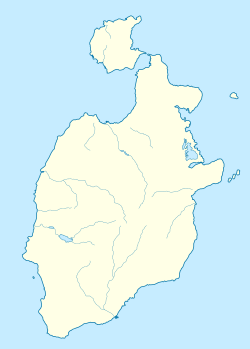Providence Island Colony | |||||||
|---|---|---|---|---|---|---|---|
| 1629–1641 | |||||||
|
Flag | |||||||
 Old Providence Island | |||||||
| Status | Colony of England | ||||||
| Capital | New Westminster 13°20′56″N 81°22′29″W / 13.34889°N 81.37472°W | ||||||
| Official languages | English | ||||||
| Religion | Puritanism | ||||||
| Government | Proprietary colony | ||||||
• Monarch | (First) James VI & I (Last) Charles I | ||||||
| Governor | |||||||
• 1629-1636 | Philip Bell | ||||||
• 1636-1638 | Robert Hunt | ||||||
• 1638-1640 | Nathaniel Butler | ||||||
| History | |||||||
• Creation of the Providence Island Company | 10 November, 1629 | ||||||
• First explored by England under Daniel Elfrith | 1629 | ||||||
• Landing of the Seaflower on Providence Island | 1631 | ||||||
| 17 May, 1641 | |||||||
| Currency | Pound sterling and Spanish dollar | ||||||
| |||||||
| Today part of | |||||||
The Providence Island colony was established in 1630 by English Puritans on Providence Island (now the Colombian Department of San Andrés and Providencia), about 200 kilometres (120 mi) east of the coast of Nicaragua. It was founded and controlled by a group of English investors, the Providence Island Company.
Although intended to be a model Puritan colony engaged in agriculture, it also functioned as a base for privateers operating against Spanish ships and settlements in the region. In 1641, Spanish and Portuguese forces, after two previous attempts, finally penetrated the harbour's defenses and captured the colony. The Spanish removed all the English settlers from the island but kept the structures. This garrison was maintained on the island, now called Santa Catalina again, until 1666.
